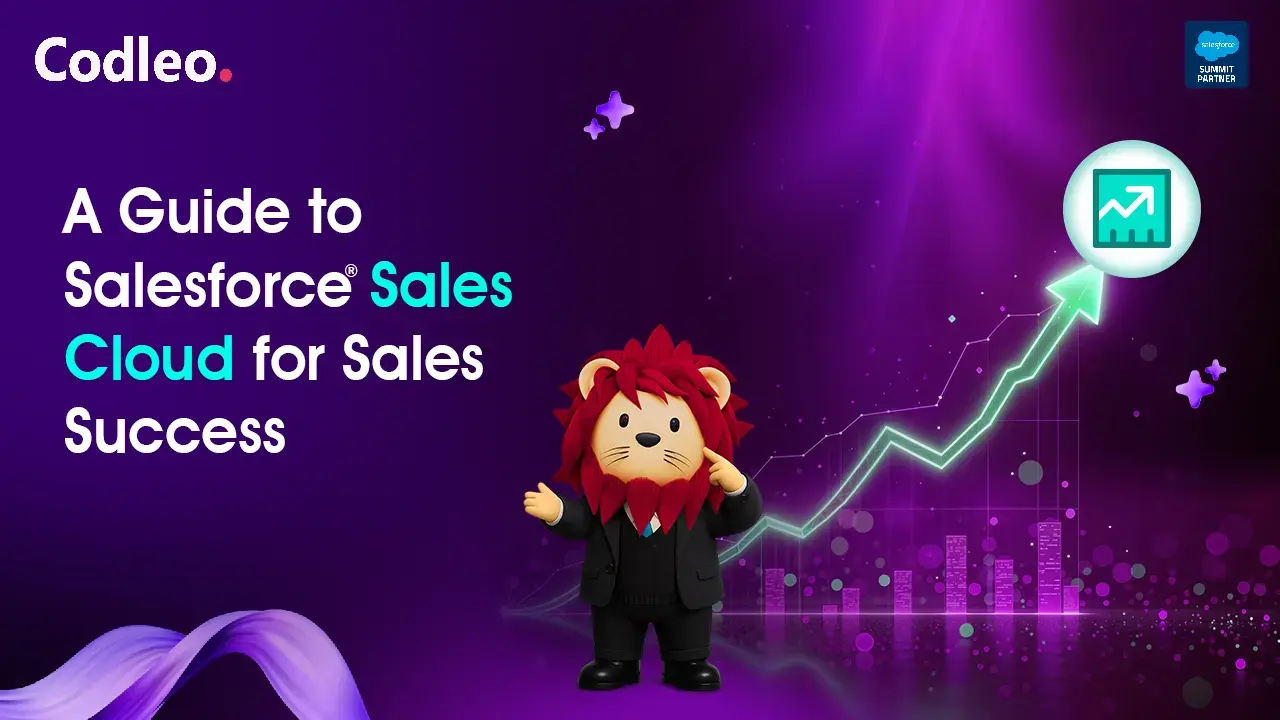Publish date:
Businesses are ready for increased operational efficiency and scalability in the current competitive scenario! Salesforce Hyperforce is a ground-breaking cloud architecture that revolutionizes the management of applications and data. Created especially for the public cloud, Hyperforce is ideal for businesses that place a high value on expansion and innovation. With its advanced security, scalability, and compliance features, companies can thrive and achieve their goals. Hyperforce empowers you to embrace the future and unlock your company's full potential!
This guide explores how mid-level executives may strategically employ Hyperforces to drive organizational performance. It includes a summary of its benefits, practical implementation strategies, and guidance on overcoming challenges.
What is Salesforce Hyperforce?
Because Hyperforce is a cloud-native architecture, companies that run Salesforce instances can leverage public cloud infrastructure. In contrast to the more conventional Salesforce architecture, which relies on Salesforce-owned data centers, Hyperforce enables companies to run Salesforce apps on any public cloud infrastructure. It allows for greater control over data residence and compliance with local regulations.
Key Benefits of Hyperforce
-
Scalability and Performance: Hyperforce makes it simple for businesses to grow, guaranteeing that they can handle increasing user and data loads without compromising productivity.
-
Flexibility and Adaptability: Hyperforce enables enterprises to more easily adapt to changing commercial needs and regulatory restrictions, which promotes market expansion.
-
Improved Compliance: By enabling local data storage, Hyperforce assists companies in adhering to local data protection regulations.
-
Agility and Innovation: Hyperforce encourages innovation and helps businesses launch new products and services more quickly by offering quicker development and testing environments.
-
Enhanced Security: Hyperforce was developed with security in mind, protecting customer data with zero-trust principles, robust encryption, and least-privileged control.
Why does Hyperforce matter for strategic Salesforce development?
Maintaining a uniform Salesforce environment across regions gets more complicated as businesses grow. It is where Hyperforce is unique:
-
Regulatory Compliance: Many companies struggle with constantly evolving data residency regulations. By localizing data storage while keeping a single Salesforce instance, Hyperforce helps you comply with local laws like GDPR and HIPAA.
-
Faster Deployment: Hyperforce's flexibility allows deployments closer to your end consumers, which speeds up time-to-market whether you're increasing operations in Europe or launching a new product in APAC.
-
Cost optimization: Businesses can save operating costs by utilizing public cloud infrastructure to lessen their dependency on pricey private data centers.
-
Scalability: Hyperforce ensures that your Salesforce setup grows with your business, handling unexpected surges in demand while maintaining efficiency.
Steps to Strategically Leverage Hyperforce for Your Enterprise
Step 1: Evaluate Migration Readiness
Before switching to Hyperforce, you should thoroughly assess your existing Salesforce system. This stage ensures that you are educated and prepared to decide whether third-party integrations need to be upgraded, legacy changes need to be adjusted, and data residency restrictions exist in your operational regions.
Step 2: Establish Business Goals
Connect your Hyperforce migration to particular business objectives to maintain motivation and concentration. For example, installing Salesforce apps in country-specific cloud zones may improve compliance in new markets, providing a precise aim for your migration.
Step 3: Collaborate with Professionals
Migration to Hyperforce is a complex process that requires professional collaboration. It is advisable to hire internal architects or certified Salesforce consultants with expertise in compliance auditing, data transfer best practices, and managing multi-cloud architecture.
Step 4: Give Security Leverage Priority
Advanced encryption and identity access control are two of Hyperforce's integrated security features. After the migration, penetration testing will be carried out to ensure the safety of every endpoint.
Step 5: Conduct a Staged Test
Do not move your whole Salesforce instance at once. Instead, begin with non-essential settings or certain areas, track user input and performance indicators, and then progressively expand to other business areas.
Step 6: Develop an End-User Strategy
Involve end users early on in the migration process. Create training materials, ensure user-centric modifications, and offer thorough documentation to encourage acceptance.
Typical Challenges and Ways to Tackle Them
I) Resistance to Change
Involve stakeholders early on in the process. Arrange workshops to demonstrate Hyperforce's advantages and give key users practical training.
II) Problems with Integration
Verify the compatibility of all third-party programs and customizations before migration. If necessary, invest in API optimization.
III) Overspending
Create a detailed migration plan with specific deadlines and key milestones. Monitor actual expenses closely and compare them regularly with your budget to stay on track.
IV) Complexity of Compliance
Utilize region-specific hosting from Hyperforce to satisfy data residency regulations and conduct routine compliance audits.
V) Risks of Downtime
Reduce the likelihood of interruptions by carrying out thorough testing and keeping rollback options for essential systems.
Top Techniques for Mid-Level Executives
1. Match business objectives with IT strategy
Make sure that using Hyperforce boosts revenue, keeps customers happy, and improves how we operate.
2. Be Transparent in Your Communication
Update teams on migration schedules, advantages, and possible hiccups. Transparency reduces resistance and fosters trust.
3. Establish a Structure for Governance
To ensure uniformity across areas, clearly define procedures for data management, access restrictions, and performance evaluation.
4. Make Use of Analytics
Use Salesforce analytics to assess your Hyperforce migration by monitoring KPIs like user adoption, transaction speeds, and system uptime.
5. Invest in Training
Continuous training programs give teams the know-how to fully utilize Hyperforce's potential.
6. Constantly Track Performance
Establish ongoing monitoring after implementation to find bottlenecks, allocate resources efficiently, and ensure the system functions properly.
How Hyperforce Enables Innovation
Hyperforce is a catalyst for innovation as well as operational efficiency. Here's how:
a. Scalable AI Integration
Businesses may improve machine learning and predictive analytics reaction times by deploying AI-powered Salesforce features closer to their user base with Hyperforce.
b. Easy Multi-Cloud Management
Integrate Salesforce with other cloud-based platforms to establish a single location for data exchange and teamwork.
c. Encouragement of Sustainability Objectives
Many public cloud providers prioritize carbon-neutral operations and renewable energy in line with corporate sustainability objectives.
d. Quick Testing and Prototyping
Thanks to Hyperforce's ability to create testing environments more quickly, businesses may test new tools and procedures without compromising live systems.
Professional Support for the Implementation of Salesforce Hyperforce
Businesses should collaborate with Salesforce partners to fully utilize Salesforce Hyperforce. These recognized specialists can help you design, integrate, and migrate custom apps to ensure a smooth transition to Hyperforce. Working with professionals can help organizations increase sales and customer satisfaction while reducing processes. Salesforce-certified developers are trained experts who administer the platform and provide customized solutions to meet specific business demands.
Gazing Ahead
The launch of Salesforce Hyperforce enables a more scalable, secure, and compliant cloud architecture. Businesses can create new opportunities for innovation and growth by moving to Hyperforce and working with knowledgeable Salesforce development service providers. Grow your business and embrace the future of cloud computing with Salesforce Hyperforce.
Summary
Salesforce Hyperforce is a cloud-native architecture that lets enterprises run Salesforce applications on public cloud infrastructure. It provides scalability, compliance, better security, and flexibility, enabling businesses to respond to market demands and regulatory constraints.
Key benefits include:
-
Better performance and compliance with data storage rules.
-
Faster deployment and cost optimization.
-
Support for AI, multi-cloud management, and sustainability goals.
To properly move, firms should assess readiness, create goals, work with professionals, and emphasize security. Clear communication, staged testing, and governance frameworks can help handle issues like opposition to change and downtime. Hyperforce promotes innovation, scalability, and operational efficiencies.
















